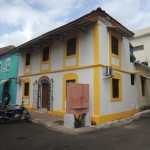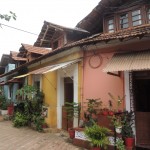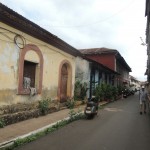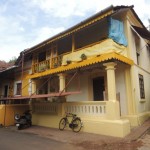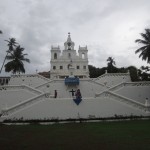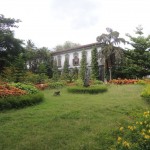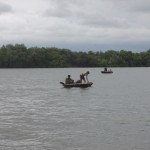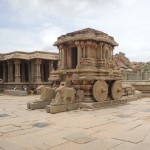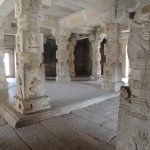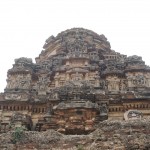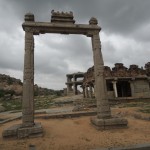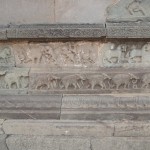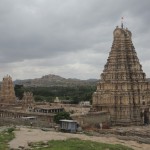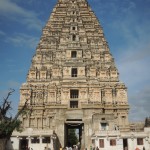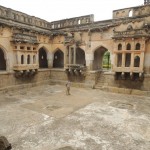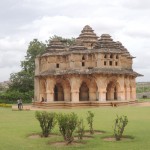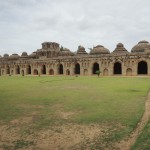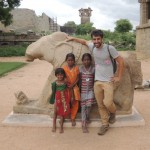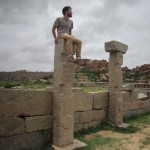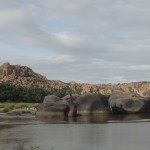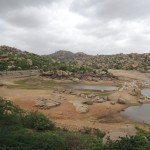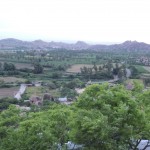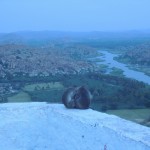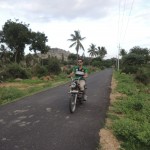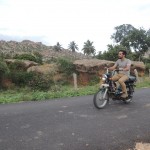The year is 1946 AD. India is entirely occupied by the British. Well, not entirely. One small state of indomitable Goans still holds out against the invaders.
Okay, it is not that they are independent, in fact the state of Goa is ruled by the Portuguese. But you cannot really imagine that the Indians obey the PORTUGUESE, so people here must be rather free. Without the magic potion.
Things have changed since the Indian invasion in 1961 and times have become rough. Nowadays, poor Goa is periodically overrun by the Allied European Tourists. “D Day” is around Christmas, usually the invaders debark at the beaches, but normally the attack is hold to a standstill several hundred meters land-inside and the offenders hold the position during a few months, unable to move further. Under normal circumstances they leave at the beginning of the rain season when the climatic conditions start to favor the defenders.
Our route was quite different from the one of our brothers in arms. We arrived during the monsoon, avoided Goa’s beaches and instead we enjoyed the charming architectural heritage. Walking through the quiet streets of Panaji really felt like home. These houses could also stand at any South-European shore, and additionally lots of the street signs or shop advertisements are still written in Portuguese. After Vasco da Gama’s discovery in 1498, nearby “Old Goa” soon used to be one of the most important cities in international trade, comprising more inhabitants than London or Lisbon. Past’s splendor has gone, but you can still see Asia’s biggest churches there. The Hindus visiting those sites seemed to be very impressed, and some of them even prayed in the churches – there’s nothing to loose, so why not giving it a try? Goa also is much cleaner than the rest of the country and people are rather friendly. From what we have seen in India, this is probably the place with the highest quality of life.
After that we went to Hampi, one of the most famous temple sites in India. We expected it to be very touristy, but again we were positively surprised. Of course this impression was partly due to the fact that it was off-season and that we did not stay at the main tourist hub. But in general the atmosphere in the whole area was super relaxed. We stayed at friendly “Gowri Resort“, located in a small village 5 km away from the town. The landscape was simply amazing and idyllic, full of rocks, rivers and with a lovely lake. However, what was best were the people. They seldom tried to cheat us but were really polite and natural. They greet you and wave, often have time for and interest in a small conversation and found it cool when Steve jogged through their remote villages. It was definitely the first time we truly appreciated the overall atmosphere. That it happened at the most touristy place may seem a bit paradox, but hey, this is India!
In Hampi, we also had a very Indian experience. To reach the guest-house, the most usual and inexpensive way was to rent a motorbike. To make it more authentic, we accepted all challenges at once: Both of us had never driven a motorbike before. We had two big backpacks and two smaller ones with us. We had to drive on the left-hand side. We did not wear helmets. We only gradually learnt how to pass a goat or cow herd of dozens of animals. The motorcycle did not have lights. But finally we arrived without any inconveniences and enjoyed it a lot. We are not quite sure but we hope that for driving a motorcycle in India you do not need a driving license. Because actually we had none.
Motorcycling was so great that we also used the vehicle during our whole stay to explore the temples. The ancient city is widespread and there are ruins just everywhere. In the 14th and 15th century the city had up to 500 thousands inhabitants. Accordingly the temples are pretty glamorous and can give you great day when exploring them. Probably the photos say it best ….
